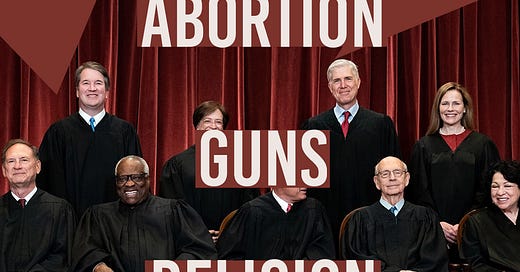💣 Abortion, Guns & School Prayer: 3 Supreme Court Cases to Understand Now
The U.S. Supreme Court blew up the constitutional landscape
As June 2022 ended, the U.S. Supreme Court blew up the constitutional landscape with its rapid-fire decisions on some of the most pressing and divisive issues in America today. This all-out reshaping of the Constitution by a “conservative” majority cannot be overstated. It is breathtaking, and it will affect every human being in the United States. (Ther…
Keep reading with a 7-day free trial
Subscribe to Simple Politics with Kim Wehle to keep reading this post and get 7 days of free access to the full post archives.




